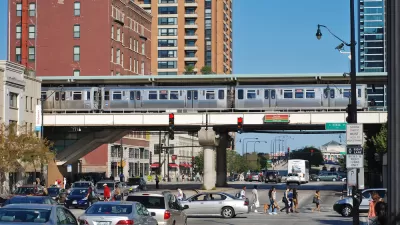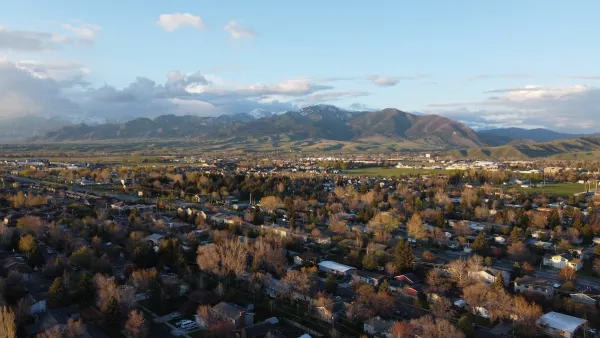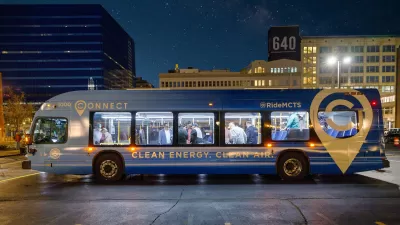Guangzhou, China's public transit network barely existed back in the late 1980s, when the Guangzhou Metro Corporation (GMC) was created to oversee its creation. Today they employ over 17,000 people and in 2010 GMC carried 1.18 billion passengers.
Brian Baker looks at the rapid growth of Guangzhou's transit system:
"The initial 5.4km section of Line 1 opened in 1997 and linked Xilang with Hangshwa along an east–west corridor. In 1999 it was extended to Guangzhou East rail station and traversed 18km with 16 stations."
"By November 2010 the Guangzhou metro network totalled 236km with 144 stations. There are 8 lines. And not all of them are limited to the city and environs. The network had expanded by 170km in five years. The metro system now reaches into the outer suburbs of the city and beyond the city boundaries."
FULL STORY: Guangzhou Metro: From nought to 1.2 billion passengers in 20 years

Planetizen Federal Action Tracker
A weekly monitor of how Trump’s orders and actions are impacting planners and planning in America.

Map: Where Senate Republicans Want to Sell Your Public Lands
For public land advocates, the Senate Republicans’ proposal to sell millions of acres of public land in the West is “the biggest fight of their careers.”

Restaurant Patios Were a Pandemic Win — Why Were They so Hard to Keep?
Social distancing requirements and changes in travel patterns prompted cities to pilot new uses for street and sidewalk space. Then it got complicated.

Platform Pilsner: Vancouver Transit Agency Releases... a Beer?
TransLink will receive a portion of every sale of the four-pack.

Toronto Weighs Cheaper Transit, Parking Hikes for Major Events
Special event rates would take effect during large festivals, sports games and concerts to ‘discourage driving, manage congestion and free up space for transit.”

Berlin to Consider Car-Free Zone Larger Than Manhattan
The area bound by the 22-mile Ringbahn would still allow 12 uses of a private automobile per year per person, and several other exemptions.
Urban Design for Planners 1: Software Tools
This six-course series explores essential urban design concepts using open source software and equips planners with the tools they need to participate fully in the urban design process.
Planning for Universal Design
Learn the tools for implementing Universal Design in planning regulations.
Heyer Gruel & Associates PA
JM Goldson LLC
Custer County Colorado
City of Camden Redevelopment Agency
City of Astoria
Transportation Research & Education Center (TREC) at Portland State University
Camden Redevelopment Agency
City of Claremont
Municipality of Princeton (NJ)





























